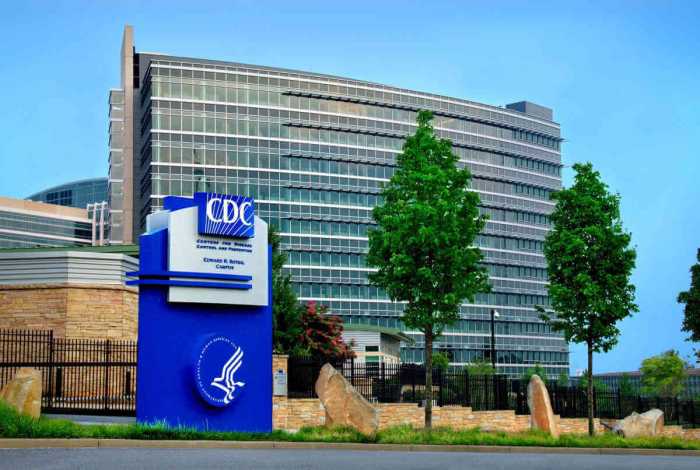While New York City’s health department is celebrating the decline in new HIV diagnoses in 2017 compared to 2016, it is also using a new method to estimate how many of the new diagnoses in 2017 were among people who were newly infected with the virus that year, altering the recent year-to-year comparisons announced in past reports.
“This historic low in new HIV diagnosis demonstrates that we are well on our way to ending the HIV epidemic in New York City,” Dr. Demetre Daskalakis, the deputy commissioner for disease control in the health department, said in a November 29 statement that accompanied the department’s annual HIV surveillance report. “We are diagnosing people with HIV earlier and linking them to care, preventing disease progression while harnessing the power of treatment to prevent transmission.”
There were 2,157 new HIV diagnoses in 2017 compared to 2,279 in 2016, a 5.4 percent decrease. Among the 2,157, 1,707 were among men, 394 were among women, and 56 were among transgender men and women. Men who have sex with men accounted for 1,243 of the new HIV diagnoses in 2017, remaining the risk category with the most new HIV diagnoses. There were declines in new diagnoses in all race and ethnic groups except among Latinos.
New diagnoses among Latinos went from 768 in 2016 to 774 in 2017. There were 759 new HIV diagnoses among Latinos in 2015. While those differences are likely not statistically significant, they do mean that new diagnoses are not decreasing in that population.
“It’s alarming,” said Guillermo Chacon, president of the Latino Commission on AIDS. “It was a trend that was seen in 2016 and I’m alarmed that it was sustained in 2017.”
Ultimately, new HIV diagnoses, which could have happened in 2017 or in any year before, are at best a surrogate for new HIV infections. Federal, state, and local public health officials have used various methods to estimate new HIV infections, but this latest methodological change is stark.
In 2016 and in prior years, the city health department used the Stratified Extrapolation Approach (SEA), a method that used blood testing, demographic data, and testing and treatment history to estimate the number of new HIV infections in a given year.
For the first time this year, the city used the CD4-depletion model, a method that weighs the distribution of a type of blood cell, a CD4 cell, in newly diagnosed people and demographic data to estimate how many people were newly infected in a population in a given year.
Using the old method, new HIV infections declined by 557 from 2,098 in 2012 to 1,541 in 2016. Under the new method, new HIV infections declined by 1,000 from 2,800 in 2013 to 1,800 in 2017. The new method resulted in higher estimated new HIV infections, but it also showed larger year-to-year declines in HIV incidence.
The change was imposed on public health officials across the country by the federal Centers for Disease Control and Prevention (CDC).
“The real folks who changed the way we measure incidence are the CDC,” Daskalakis told Gay City News. “They validated it and actually published the studies… I think there’s a reason they discontinued the old method. Incidence methods based on laboratory data are notoriously questionable.”
Estimated HIV incidence is not some academic exercise.
Governor Andrew Cuomo and Mayor Bill de Blasio have both endorsed the Plan to End AIDS, an ambitious proposal that will use anti-HIV drugs, support services, and other assistance for HIV-positive people so they stay on their anti-HIV drugs, remain healthy, and have no detectable virus in their bodies. People who are undetectable cannot infect others.
Among HIV-negative people, the plan proposes to use pre-exposure prophylaxis (PrEP) in people who are at risk of becoming HIV infected and post-exposure prophylaxis (PEP) in people who had a recent exposure to HIV (no more than 72 hours earlier) to keep them uninfected.
The plan aims to reduce new HIV infections in the state from the estimated 2,481 in 2014 to 750 annually by 2020. With most new HIV infections occurring in New York City, the city has set its own goal of reducing new HIV infections to 600 annually by 2020. At those levels, health officials estimate, the nearly 40-year epidemic will no longer be able to sustain itself.
The old method of calculating new HIV infections suggested that the city would have a difficult time getting to 600 new HIV infections annually by 2020. The new method said there were 2,800 new HIV infections in the city in 2013 and 2014, 2,600 in 2015, 2,200 in 2016, and 1,800 in 2017. If the city continues to reduce new HIV infections by 400 a year for the next three years, it will get to exactly 600 new HIV infections in 2020.
“We are on track to end the epidemic in 2020,” Daskalakis said.



































